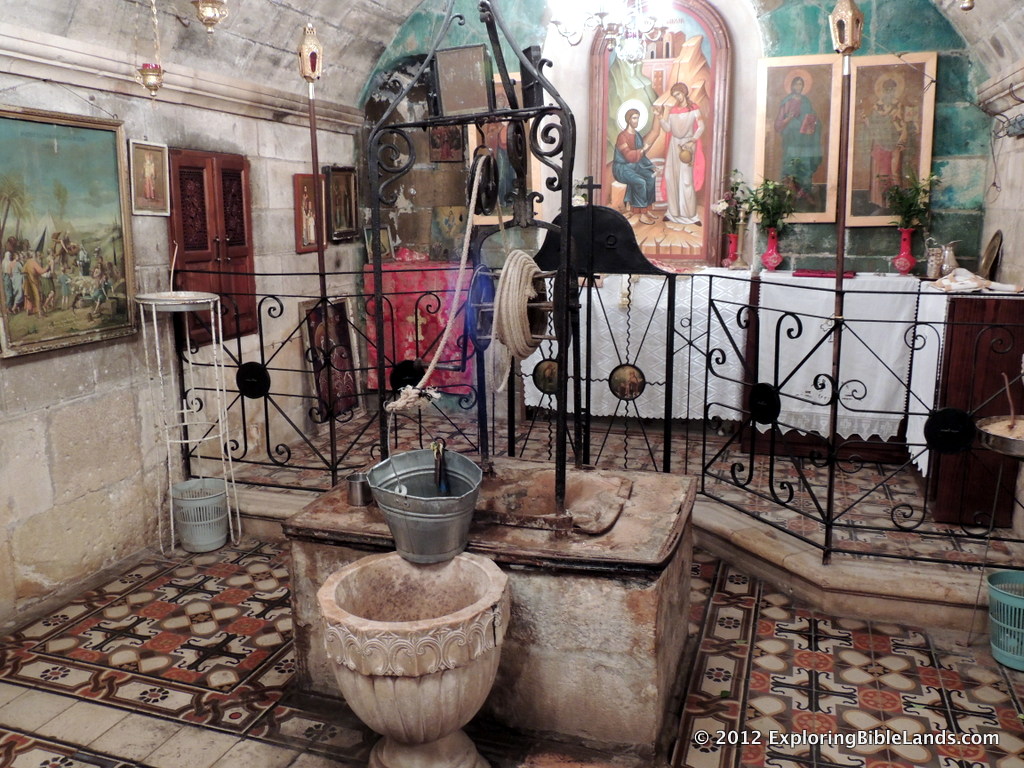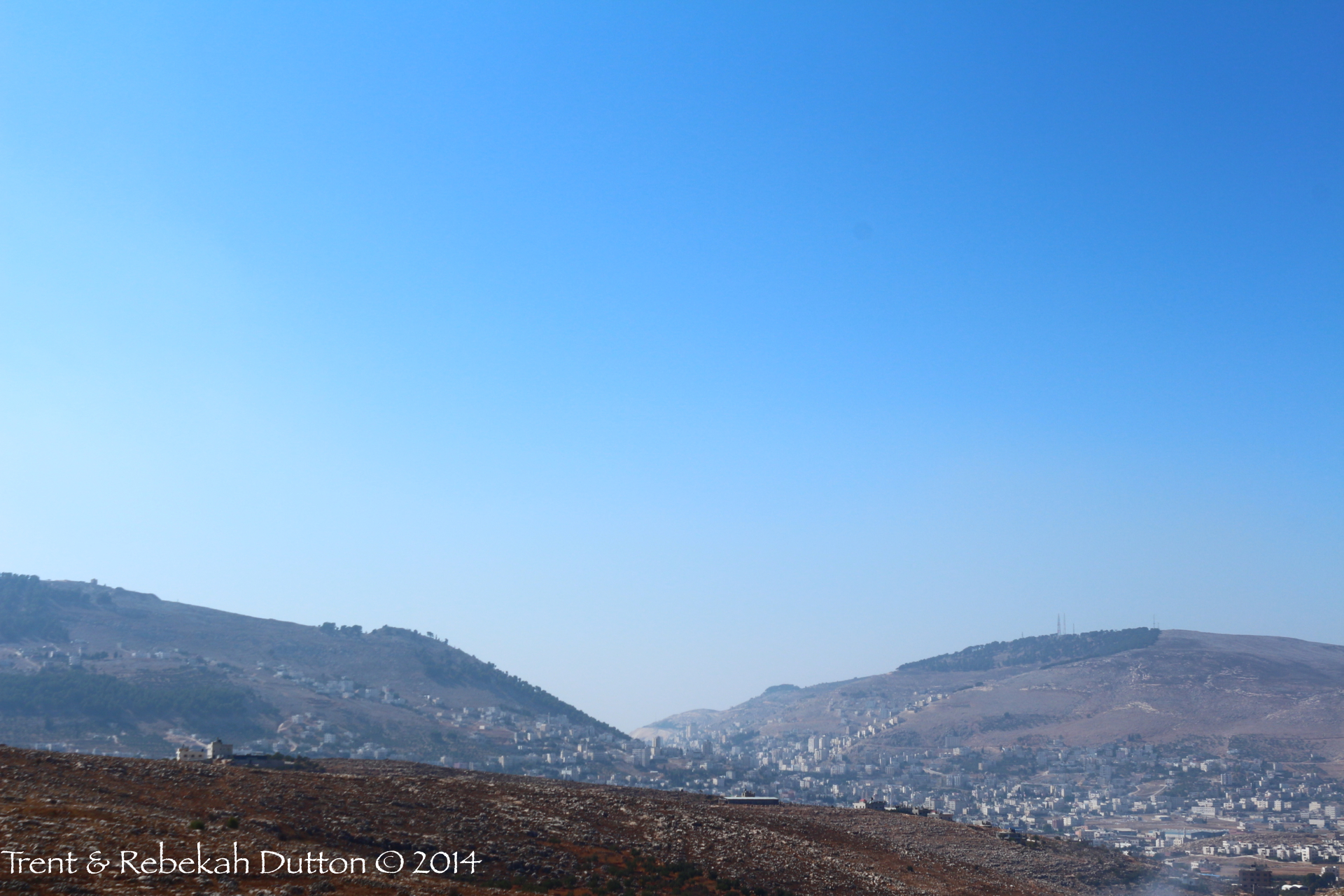 NOTE: This is the fourth in a series of posts on locations associated with the Ark of the Covenant. We have previously discussed the Plains of Moab, the Jordan River and the city of Jericho.
After the defeat of Ai, Joshua gathered the people together to read the Book of the Law to them. He placed the Ark of the Covenant between Mount Ebal and Mount Gerizim. The people then divided themselves on the two mountains and listened to Joshua.
NOTE: This is the fourth in a series of posts on locations associated with the Ark of the Covenant. We have previously discussed the Plains of Moab, the Jordan River and the city of Jericho.
After the defeat of Ai, Joshua gathered the people together to read the Book of the Law to them. He placed the Ark of the Covenant between Mount Ebal and Mount Gerizim. The people then divided themselves on the two mountains and listened to Joshua.
Now Joshua built an altar to the Lord God of Israel in Mount Ebal, as Moses the servant of the Lord had commanded the children of Israel, as it is written in the Book of the Law of Moses: “an altar of whole stones over which no man has wielded an iron tool.” And they offered on it burnt offerings to the Lord, and sacrificed peace offerings. And there, in the presence of the children of Israel, he wrote on the stones a copy of the law of Moses, which he had written. Then all Israel, with their elders and officers and judges, stood on either side of the ark before the priests, the Levites, who bore the ark of the covenant of the Lord, the stranger as well as he who was born among them. Half of them were in front of Mount Gerizim and half of them in front of Mount Ebal, as Moses the servant of the Lord had commanded before, that they should bless the people of Israel. And afterward he read all the words of the law, the blessings and the cursings, according to all that is written in the Book of the Law. There was not a word of all that Moses had commanded which Joshua did not read before all the assembly of Israel, with the women, the little ones, and the strangers who were living among them. - Joshua 8:30-35
These two mountains, located about 60 kilometers (40 miles) north of Jerusalem, face each other with the modern city of Nablus on a very narrow piece of land between them. Nablus is approximately 550 meters (~1800 feet) above sea level and the mountains each rise over 300 meters (1000 feet) on either side. As the Israelites sat on these mountains to listen to Joshua, it would have been very easy for them to look across the valley at their fellow family members on the other side.
This same area is the same location as the Biblical city of Shechem. Jewish tradition holds that the original meaning of the word is "saddle", which gives indication of the what it looks like. In Genesis 12, Abraham offered a sacrifice to God in this area. Later, Jacob built a well nearby that is mentioned a number of times in the Bible. Shortly after the nation divided, 1 Kings 12:1 tells us that capital city of the northern nation was briefly set up at Shechem.
And Rehoboam went to Shechem, for all Israel had gone to Shechem to make him king. - 1 Kings 12:1
In the New Testament, we read of Jesus coming through this area and has a conversation with a Samaritan Woman by Jacob's Well.
He left Judea and departed again to Galilee. But He needed to go through Samaria. So He came to a city of Samaria which is called Sychar, near the plot of ground that Jacob gave to his son Joseph. Now Jacob’s well was there. Jesus therefore, being wearied from His journey, sat thus by the well. - John 4:5-6
Given the history that the Israelites had with this area, as well as the geographical features that allowed for a large group of people to be gathered, it is no wonder that Joshua chose this location to remind the people of the Law with God had given to them.
 A view not often seen on a typical tour of Israel is that of Mt. Gerizim (left) and Mt. Ebal (right), looking west at their profiles. From this angle, one can see their proximity, illustrating how two halves of one great nation could face one another on each mountain to deliver the blessings and the curses. These mountains can most commonly be seen on the North-South highway approaches to the modern day city of Nablus, which contains the ancient site of Shechem.
A view not often seen on a typical tour of Israel is that of Mt. Gerizim (left) and Mt. Ebal (right), looking west at their profiles. From this angle, one can see their proximity, illustrating how two halves of one great nation could face one another on each mountain to deliver the blessings and the curses. These mountains can most commonly be seen on the North-South highway approaches to the modern day city of Nablus, which contains the ancient site of Shechem.



